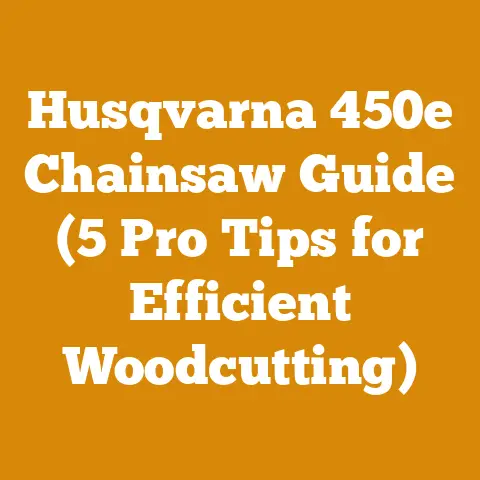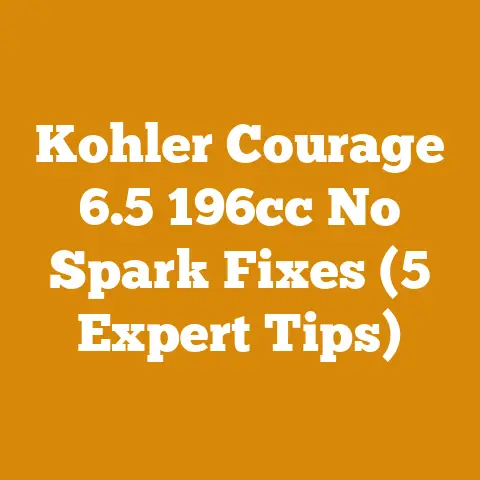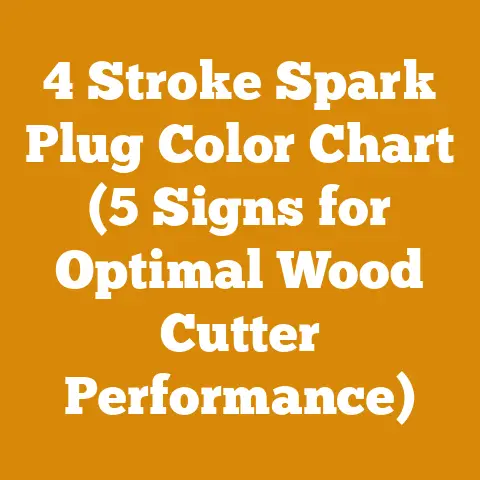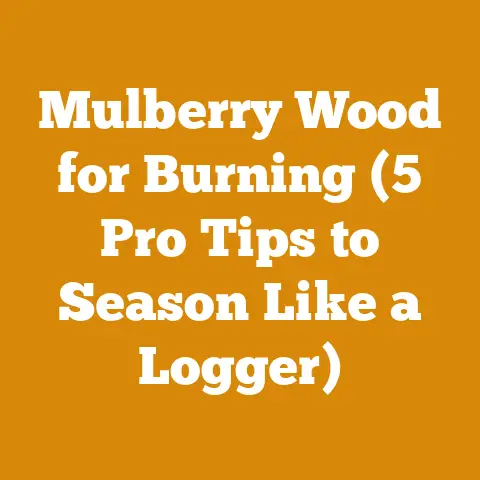Green Board and Batten Wall (Dry vs. Fresh Wood Insights)
Green Board and Batten Wall (Dry vs. Fresh Wood Insights): A Cost-Conscious Guide
As someone who’s spent years knee-deep in sawdust and the satisfying scent of freshly cut wood, I understand the allure of a beautiful board and batten wall. It’s a classic design, offering a rustic charm that can transform any space. But before you jump into this project, there’s a crucial decision to make: should you use green (freshly cut) wood or dry wood? This choice significantly impacts not only the aesthetic but also the cost and longevity of your wall. In this article, I’ll walk you through the ins and outs of using both green and dry wood for your board and batten wall, focusing on cost considerations and providing actionable insights to help you make the best decision for your project.
Understanding the Functionality of Board and Batten Walls
Board and batten walls aren’t just about aesthetics. They offer a functional layer of protection and insulation to your home. The vertical battens cover the seams between the boards, preventing water infiltration and improving structural integrity. Choosing the right type of wood and ensuring it’s properly seasoned (or dried) is key to maximizing these benefits. A well-constructed board and batten wall can last for decades, adding character and value to your property.
The Great Debate: Green vs. Dry Wood – A Head-to-Head Comparison
The core question is: what are the pros and cons of using green versus dry wood for a board and batten wall, especially when we consider the cost? Let’s break it down:
Green Wood: The Raw and Rustic Choice
- Definition: Green wood, also known as fresh wood, is lumber that has recently been harvested and hasn’t undergone a drying process. It contains a high moisture content, typically above 20%.
- Cost Advantages:
- Lower Purchase Price: Generally, green wood is cheaper to buy than kiln-dried or air-dried lumber. This is because the supplier hasn’t invested in the drying process, which involves time, energy, and infrastructure. I’ve often found green lumber to be 20-40% cheaper than its dried counterpart, depending on the species and location. For example, in my region, green pine can be as low as $1 per board foot, while kiln-dried pine might be $1.50 or more.
- Easier to Work With: Green wood is softer and easier to cut, nail, and screw. This can save you time and effort, potentially reducing labor costs if you’re hiring someone.
- Challenges and Hidden Costs:
- Shrinkage and Warping: As green wood dries, it shrinks. This shrinkage can lead to gaps in your board and batten wall, requiring additional labor and materials to fix. Warping can also occur, causing the boards to twist and bend, making them difficult to work with.
- Increased Labor for Sealing and Maintenance: Because green wood is more prone to movement, you’ll need to invest in high-quality sealants and be prepared for ongoing maintenance to address gaps and prevent water damage. This can add significantly to the overall cost.
- Risk of Mold and Rot: The high moisture content in green wood makes it susceptible to mold and rot, especially if it’s not properly ventilated. This can compromise the structural integrity of your wall and lead to costly repairs down the line.
- Nail Pulling: As the wood dries and shrinks, nails can pull out, requiring you to go back and re-nail or use longer, more expensive fasteners.
- My Personal Experience: I once used green cedar for a small shed project, thinking I was saving money. The initial cost was indeed lower, but within a year, I had to replace several warped boards and fill in numerous gaps. The extra labor and materials ended up costing me more than if I had used dry wood from the start.
Dry Wood: The Stable and Reliable Option
- Definition: Dry wood is lumber that has been seasoned to reduce its moisture content. This can be done through air-drying (stacking the wood and allowing it to dry naturally) or kiln-drying (using a controlled oven to accelerate the drying process). The target moisture content for interior applications is typically between 6-8%.
- Cost Advantages:
- Dimensional Stability: Dry wood is much less likely to shrink, warp, or twist, resulting in a more stable and long-lasting wall. This reduces the need for repairs and maintenance, saving you money in the long run.
- Reduced Labor Costs: Because dry wood is easier to work with and less prone to movement, installation is typically faster and requires less skill. This can lower labor costs if you’re hiring someone.
- Lower Risk of Mold and Rot: The lower moisture content in dry wood makes it less susceptible to mold and rot, extending the lifespan of your wall.
- Challenges and Considerations:
- Higher Purchase Price: Dry wood is more expensive than green wood due to the cost of the drying process. However, this initial investment can pay off in the long run through reduced maintenance and repairs.
- Can be Harder to Work With: Depending on the species and drying method, dry wood can be harder to cut and nail than green wood. However, this is usually a minor inconvenience compared to the problems associated with green wood.
- My Personal Experience: For my own home’s board and batten siding, I opted for kiln-dried cedar. While the initial cost was higher, the installation was much smoother, and I haven’t had to deal with any significant issues related to shrinkage or warping in the five years since.
Breaking Down the Costs: A Detailed Analysis
To make a truly informed decision, let’s delve into the specific cost components associated with each option. I’ll use data and estimates based on my experience and industry averages.
Green Wood Cost Breakdown (per 100 Square Feet of Wall):
- Lumber Purchase: \$100 – \$200 (depending on species and availability)
- Sealing and Priming: \$50 – \$100 (high-quality sealant is crucial)
- Extra Fasteners: \$20 – \$40 (to account for potential nail pulling)
- Potential Waste (due to warping and defects): \$20 – \$50 (estimate 10-25% waste)
- Labor for Installation: \$200 – \$400 (assuming a professional installer at \$50/hour)
- Labor for Repairs (shrinkage, gaps, warping): \$100 – \$300 (estimate 2-6 hours of repair work)
- Total Estimated Cost: \$490 – \$1090
Dry Wood Cost Breakdown (per 100 Square Feet of Wall):
- Lumber Purchase: \$150 – \$300 (depending on species and drying method)
- Sealing and Priming: \$40 – \$80 (standard sealant is usually sufficient)
- Fasteners: \$10 – \$20 (standard amount of fasteners)
- Waste: \$10 – \$20 (estimate 5-10% waste)
- Labor for Installation: \$150 – \$300 (assuming a professional installer at \$50/hour)
- Labor for Repairs: \$0 – \$50 (minimal repairs expected)
- Total Estimated Cost: \$360 – \$750
Key Takeaways from the Cost Comparison:
- While green wood initially appears cheaper, the potential for repairs, extra materials, and increased labor can quickly close the gap and even exceed the cost of using dry wood.
- Dry wood offers greater predictability and reduces the risk of unexpected expenses down the line.
Species Matters: Wood Selection and Cost Implications
The type of wood you choose also plays a significant role in the overall cost. Here’s a brief overview of common wood species and their cost considerations:
- Pine: A softwood that’s relatively inexpensive and easy to work with. However, it’s not as durable as other options and requires more maintenance. Green pine is readily available and very affordable, but it’s prone to significant shrinkage and warping.
- Cost: \$1 – \$2 per board foot (green) / \$1.50 – \$3 per board foot (dry)
- Cedar: A naturally rot-resistant softwood that’s ideal for exterior applications. Cedar is more expensive than pine but offers superior durability and aesthetic appeal.
- Cost: \$3 – \$5 per board foot (green) / \$4 – \$7 per board foot (dry)
- Redwood: Similar to cedar in terms of durability and rot resistance, but often more expensive. Redwood offers a rich, reddish-brown color that adds a touch of elegance to any project.
- Cost: \$4 – \$8 per board foot (green) / \$6 – \$12 per board foot (dry)
- Cypress: Another excellent choice for exterior applications due to its natural water resistance. Cypress is known for its unique grain patterns and warm color.
- Cost: \$3 – \$6 per board foot (green) / \$5 – \$9 per board foot (dry)
- Hardwoods (Oak, Maple, Ash): While less common for board and batten walls, hardwoods offer exceptional durability and strength. However, they’re also more expensive and harder to work with.
- Cost: \$5 – \$15+ per board foot (green or dry, depending on species and grade)
My Recommendation: For exterior applications, I strongly recommend using cedar, redwood, or cypress. The extra cost is well worth it in terms of longevity and reduced maintenance. For interior applications, pine can be a viable option, but be sure to use dry wood and apply a high-quality sealant.
Location, Location, Location: How Geography Impacts Wood Costs
The cost of wood can vary significantly depending on your location. Factors that influence regional pricing include:
- Proximity to Forests: Areas with abundant forests typically have lower lumber prices due to reduced transportation costs.
- Local Demand: High demand for lumber in a particular region can drive up prices.
- Transportation Costs: The cost of transporting lumber from the mill to the retailer can add significantly to the overall price.
- Climate: Regions with harsh climates may require more durable wood species, which can be more expensive.
Example: In the Pacific Northwest, where cedar and redwood are readily available, prices for these species are generally lower than in the Midwest or East Coast.
Tip: Research local lumber suppliers and compare prices to get the best deal. Consider buying directly from a mill if possible, as this can often save you money.
Drying Your Own Wood: A DIY Cost-Saving Strategy?
If you’re looking to save money, you might consider drying your own wood. This involves buying green lumber and stacking it properly to allow it to air-dry naturally.
- Pros:
- Cost Savings: You can save a significant amount of money by avoiding the cost of kiln-drying.
- Control Over the Process: You have complete control over the drying process, allowing you to ensure that the wood is dried properly.
- Cons:
- Time Commitment: Air-drying wood can take several months or even years, depending on the species and climate.
- Risk of Defects: Improper stacking or ventilation can lead to warping, twisting, and other defects.
- Space Requirements: You’ll need a large, well-ventilated space to store the wood while it dries.
My Experience: I’ve air-dried wood for smaller projects, and it can be a rewarding experience. However, it requires patience, attention to detail, and a willingness to accept some level of waste. For a large project like a board and batten wall, I would generally recommend buying dry wood unless you have a lot of time and experience.
Estimating Drying Time: A general rule of thumb is that air-drying wood takes about one year per inch of thickness. However, this can vary depending on the species, climate, and stacking method.
Labor Costs: DIY vs. Hiring a Professional
Another significant cost factor is labor. You can save money by installing the board and batten wall yourself, but it’s important to consider your skill level and the time commitment involved.
- DIY:
- Pros: Significant cost savings.
- Cons: Requires time, skill, and the right tools. Potential for mistakes that can be costly to fix.
- Hiring a Professional:
- Pros: Ensures a high-quality installation. Saves time and effort.
- Cons: Can be expensive.
Estimating Labor Costs: Professional carpenters typically charge \$40-\$100 per hour, depending on their experience and location. A simple board and batten wall installation might take 2-5 days, depending on the size and complexity of the project.
My Recommendation: If you’re comfortable with basic carpentry skills and have the time, DIY installation can be a great way to save money. However, if you’re unsure of your abilities or want to ensure a professional finish, hiring a qualified carpenter is a worthwhile investment.
Tool Costs: Essential Equipment for Board and Batten Installation
Regardless of whether you choose to DIY or hire a professional, you’ll need certain tools to install a board and batten wall. Here’s a list of essential equipment and their approximate costs:
- Circular Saw: \$50 – \$200 (for cutting boards to length)
- Miter Saw: \$100 – \$500 (for precise angle cuts)
- Drill/Driver: \$50 – \$200 (for screwing boards into place)
- Nail Gun: \$100 – \$300 (optional, but speeds up installation)
- Level: \$20 – \$50 (for ensuring boards are straight)
- Measuring Tape: \$10 – \$20 (for accurate measurements)
- Safety Glasses: \$10 – \$20 (essential for eye protection)
- Hearing Protection: \$10 – \$20 (to protect your ears from loud noises)
Tip: Consider renting some of the more expensive tools, such as a miter saw or nail gun, if you don’t plan on using them frequently.
Permits and Regulations: Don’t Get Caught Off Guard
Depending on your location, you may need to obtain permits before installing a board and batten wall. Check with your local building department to determine the specific requirements in your area. Failure to obtain the necessary permits can result in fines and delays.
Cost of Permits: Permit fees vary widely depending on the scope of the project and the local regulations. Expect to pay anywhere from \$50 to \$500 or more for a building permit.
Cost Optimization Strategies: Saving Money Without Sacrificing Quality
Here are some practical tips for optimizing costs without sacrificing the quality of your board and batten wall:
- Shop Around for Lumber: Compare prices from different suppliers to get the best deal.
- Consider Using Reclaimed Wood: Reclaimed wood can be a cost-effective and environmentally friendly option.
- Buy in Bulk: If you’re planning a large project, consider buying lumber in bulk to save money.
- Take Advantage of Sales and Discounts: Keep an eye out for sales and discounts at your local lumber yard.
- DIY as Much as Possible: Tackle the tasks you’re comfortable with yourself to save on labor costs.
- Plan Carefully: Proper planning can help you avoid mistakes and reduce waste.
- Use a Moisture Meter: If you’re using green wood, use a moisture meter to monitor the drying process and ensure that the wood is properly seasoned before installation.
Case Studies: Real-World Examples of Board and Batten Wall Costs
To further illustrate the cost considerations, let’s look at a couple of real-world case studies:
- Case Study 1: DIY Interior Board and Batten Wall (Pine)
- Project: 100 square foot interior wall
- Lumber: Dry pine (\$200)
- Fasteners: \$20
- Sealant and Primer: \$60
- Tools (already owned): \$0
- Labor: DIY (estimated 20 hours)
- Permits: Not required
- Total Cost: \$280
- Case Study 2: Professional Exterior Board and Batten Siding (Cedar)
- Project: 500 square foot exterior wall
- Lumber: Kiln-dried cedar (\$2500)
- Fasteners: \$100
- Sealant and Primer: \$200
- Labor (professional): \$2000
- Permits: \$100
- Total Cost: \$4900
These case studies highlight the range of costs associated with board and batten walls, depending on the materials used, the scope of the project, and whether you choose to DIY or hire a professional.
Industry Benchmarks and Statistical Data
According to the National Association of Home Builders (NAHB), the average cost of exterior siding installation in the United States is \$4 to \$12 per square foot. Board and batten siding typically falls within this range, depending on the materials used and the complexity of the installation.
The price of lumber fluctuates based on market conditions and supply chain factors. You can track lumber prices through resources like Random Lengths and the Wall Street Journal.
Actionable Takeaways and Next Steps
So, what’s the bottom line? Should you use green or dry wood for your board and batten wall?
- For most projects, I recommend using dry wood. The increased cost is offset by the reduced risk of shrinkage, warping, and other problems.
- If you’re on a tight budget and have experience working with wood, green wood can be a viable option. However, be prepared for extra work and potential repairs.
- Choose the right wood species for your climate and application. Cedar, redwood, and cypress are excellent choices for exterior projects, while pine can be used for interior applications.
- Get multiple quotes from lumber suppliers and contractors.
- Plan your project carefully and obtain the necessary permits.
Next Steps:
- Determine the scope of your project. How large is the wall you’ll be covering?
- Choose your wood species. Consider your budget, climate, and aesthetic preferences.
- Decide whether to DIY or hire a professional.
- Get quotes from lumber suppliers and contractors.
- Create a detailed budget and timeline.
- Obtain the necessary permits.
- Start building!
Final Thoughts: A Timeless Investment
A board and batten wall is a timeless investment that can add beauty and value to your home. By carefully considering the costs and making informed decisions, you can create a stunning wall that will last for years to come. Whether you choose green or dry wood, remember to prioritize quality, craftsmanship, and attention to detail. With a little planning and effort, you can achieve the board and batten wall of your dreams without breaking the bank. And remember, the scent of freshly cut wood and the satisfaction of a job well done are priceless.






